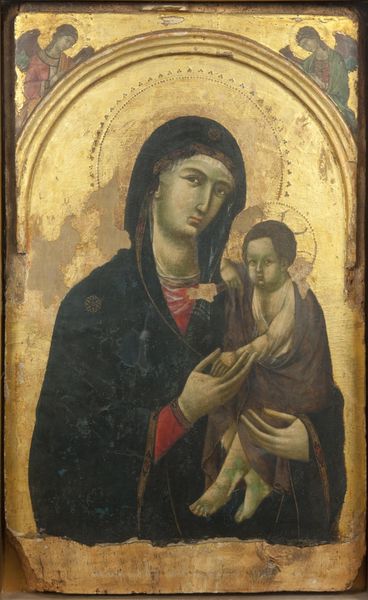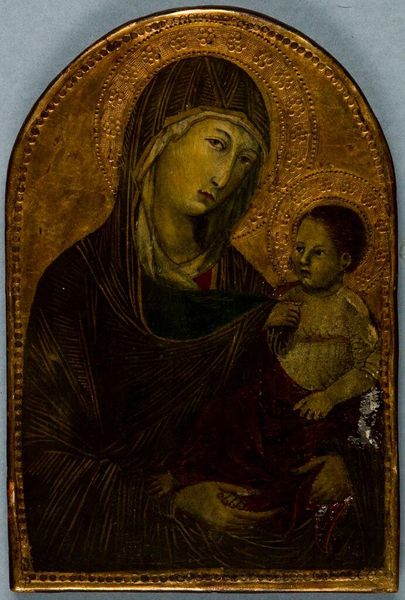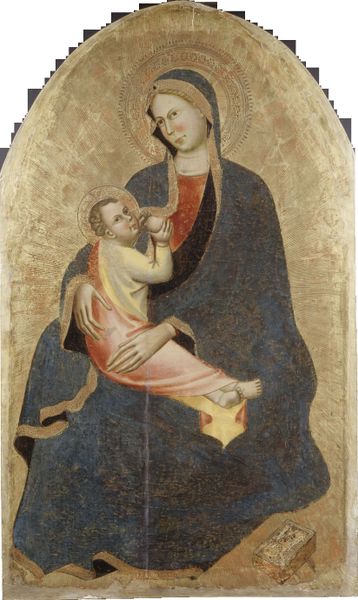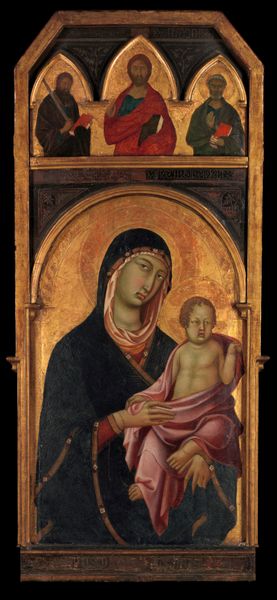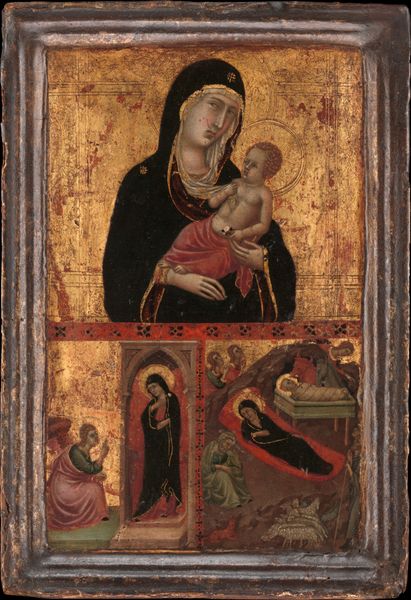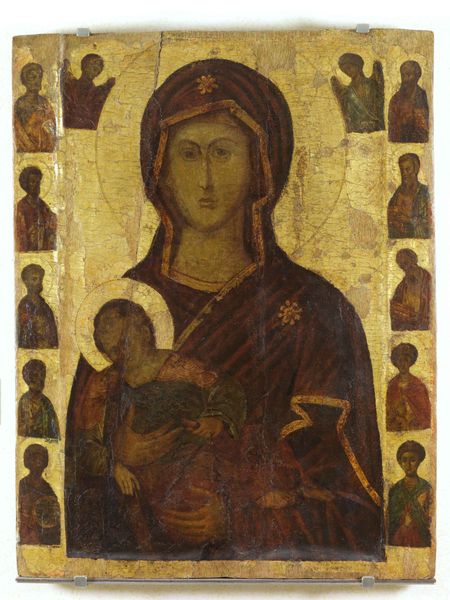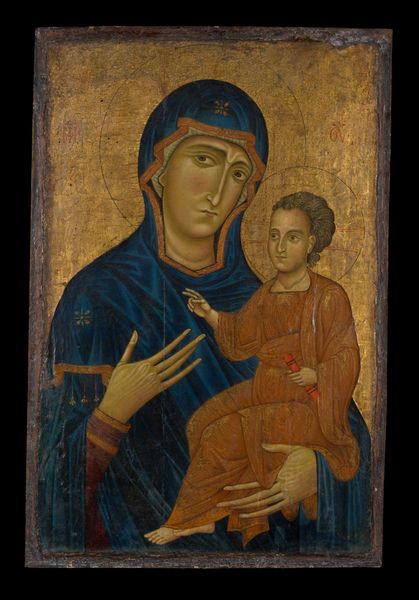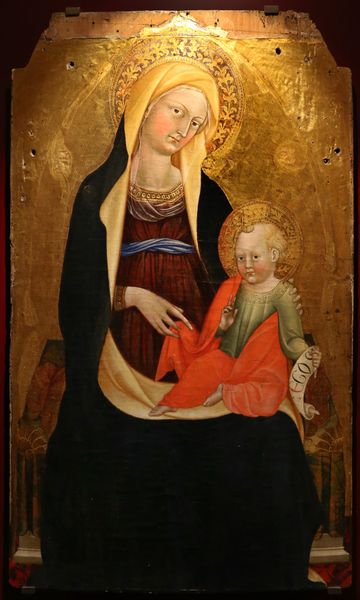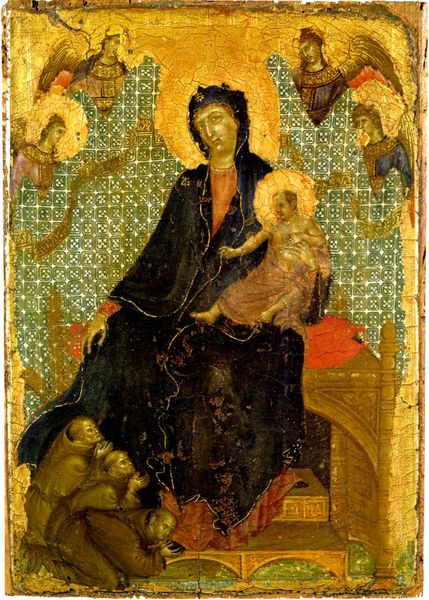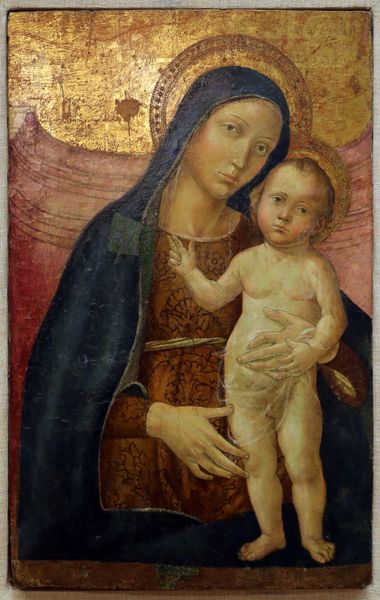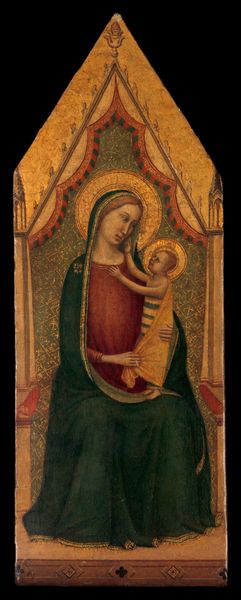
painting, oil-paint
#
portrait
#
byzantine-art
#
painting
#
oil-paint
#
oil painting
#
underpainting
#
history-painting
#
portrait art
Copyright: Orthodox Icons,Fair Use
Curator: We're now viewing "Our Lady of Elias, Chernihiv," an oil painting dating back to 1800. Editor: My immediate reaction is one of stillness, a monumental yet tender presence conveyed through this Madonna and Child. Curator: Indeed. Consider how the painting emerges from the tradition of Byzantine art. Notice the Madonna’s somber gaze, typical within depictions invested with theological significance. Her red mantle, elaborately detailed with gold, represents royalty but also the blood sacrifice associated with her son's destiny, aligning her with themes of power, sorrow, and spiritual fortitude. Editor: The golden background and halos reinforce the otherworldly, sacred quality. However, what intrigues me is the tension between the flatness, characteristic of icon painting, and the painter’s attempts at rendering three-dimensional form, particularly in the faces. This combination produces a unique visual dynamic. Curator: Precisely, the golden backdrop often speaks to the unseeable realm and elevates the figures to another dimension, whereas you astutely noticed those naturalistic touches to the subjects' physiognomies. And what about the Christ child? Editor: The infant Christ has a similar expression to his mother's—a quiet awareness. Also the artist plays with texture using a light underpainting to enrich color—a sort of chiaroscuro that gives volume. Curator: The artist seems invested in the power of rendering Mary, and she holds Jesus with an extraordinary level of emotionality despite the stylistic conventions. Editor: Yes, it's that contrast between rigid forms and soft expression that captivates. It opens up interpretations. This isn't just about faith; it's about human connection expressed through artistic convention. Curator: I think the intersectionality embedded in "Our Lady of Elias, Chernihiv," a convergence of art history, spirituality, motherhood, and cultural identity allows viewers to see this art across time. Editor: Through this focused engagement, it makes me admire the use of structure and colour and discover meaning within.
Comments
No comments
Be the first to comment and join the conversation on the ultimate creative platform.
